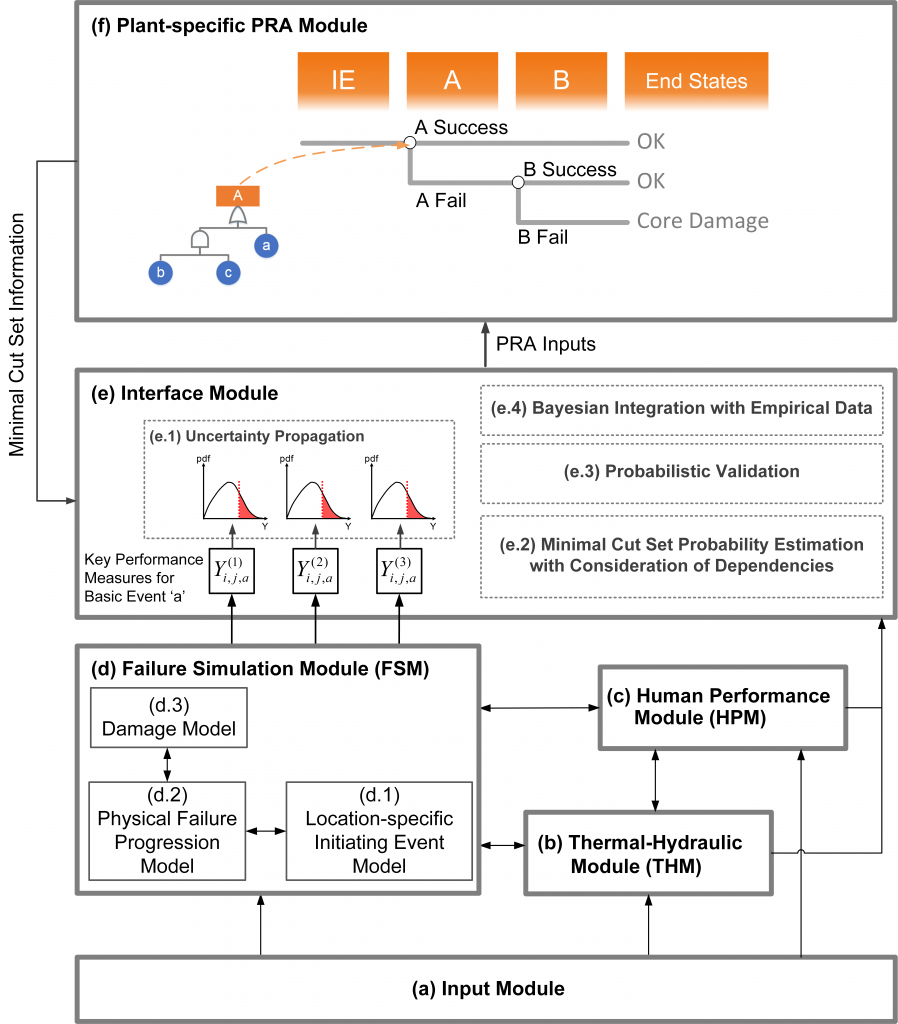Due to increased competition and fluctuations in the commercial electric sales market, there has been a renewed focus on using risk-informed approaches for developing safe and cost-effective operational strategies for Light Water Reactors (LWRs). Among these strategies is the use of new technologies (e.g., accident tolerant fuel, flexible operations, passive cooling, digital instrumentation and control upgrades) to improve operational flexibility and efficiency while maintaining safety of the U.S. LWRs. In 2019, the Department of Energy’s (DOE) Office of Nuclear Energy (NE), under the NE University Programs (NEUP), awarded Professor Zahra Mohaghegh and her team a three-year research project (#19-16298) that focuses on advancing the Integrated Probabilistic Risk Assessment (I-PRA) decision-making algorithm, previously developed by the SoTeRiA research lab, to support risk-and-cost-informed decision-making related to the deployment of new technologies for LWRs.
Results and insights from this project are expected to help the nuclear industry expedite their deployment of new technologies. The project aims at overcoming several key challenges that are facing the evaluation of alternatives to deploy new technologies for LWRs. Examples of these challenges include unpostulated safety concerns, lack of operational data and procedures, and involvement of highly complex and spatiotemporal socio-technical phenomena associated with new technology deployment scenarios. To achieve these targets, following contributions are envisioned for the project.
 Fig. 1 I-PRA decision-making algorithm, supported by the U.S. DOE (NEUP) under #19-16298 award
Fig. 1 I-PRA decision-making algorithm, supported by the U.S. DOE (NEUP) under #19-16298 award
Key Contributions
- Helping decision-makers understand the safety impact and net profitability of new technologies deployment before significant investment is committed and regulatory review process is initiated.
- Advancing the I-PRA decision-making algorithm to support risk-and-cost-informed decision-making related to the deployment of new technologies, where additional resources can be allocated to the analysis of alternatives and scenarios that have large impact on the safety risk and cost estimates.
- Making methodological and computational advancements to execute the I-PRA decision-making algorithm for the deployment of new technologies, including:
- Modeling the spatiotemporal interactions between human performance and natural hazards, and contributing to External Control Room (Ex-CR) Human Reliability Analysis (HRA).
- Advancing Probabilistic Validation methodology for validating simulation models developed in I-PRA when empirical data (e.g., operational experience) is limited or unavailable.
- Advancing a model-based financial analysis methodology previously developed by the SoTeRiA research lab for new technologies
- Conducting a case study to evaluate the safety impact and cost-effectiveness of FLEX strategies in supporting operational flexibility of a nuclear power plant. The I-PRA decision-making algorithm, equipped with the advanced methodological and computational platform developed during this project, will be applied in this case study to evaluate different alternatives for deployment of FLEX equipment during normal operation.
Project Outcomes
Advanced methodologies and a computational decision-support tool (based on the I-PRA decision-making algorithm) that can help decision makers evaluate new technology deployment alternatives for LWRs.
Fig. 2 Integrated-PRA
References
- T. Sakurahara, Z. Mohaghegh, S. Reihani, E. Kee, M. Brandyberry, S. Rodgers, An integrated methodology for spatio-temporal incorporation of underlying failure mechanisms into fire probabilistic risk assessment of nuclear power plants, Reliability Engineering & System Safety, Vol. 169, pp. 242-257, (2018)
- H. Bui, T. Sakurahara, J. Pence, S. Reihani, E. Kee, Z. Mohaghegh, An algorithm for enhancing spatiotemporal resolution of probabilistic risk assessment to address emergent safety concerns in nuclear power plants, Reliability Engineering & System Safety, Vol. 185, pp. 405-428, (2019)
